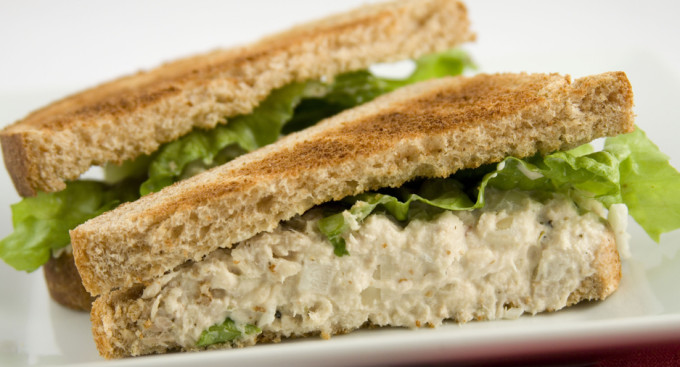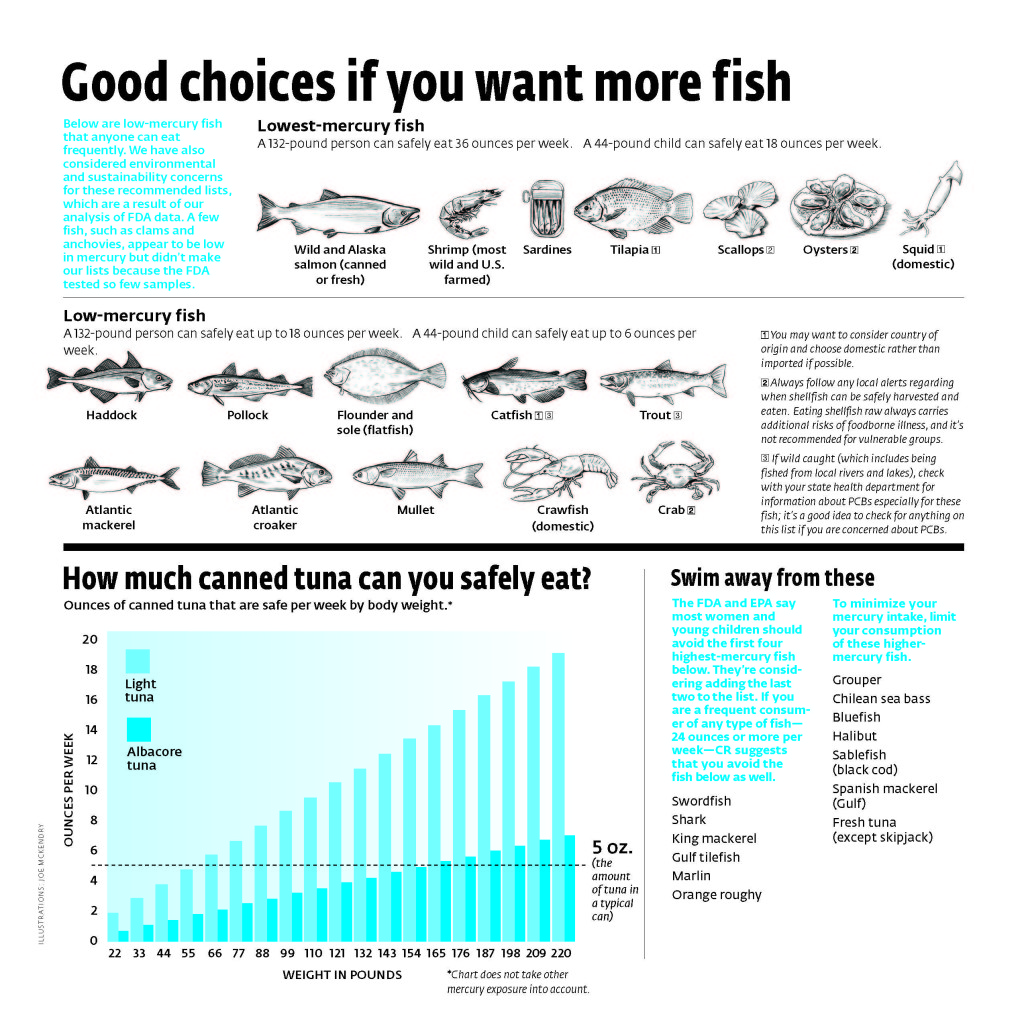
By Rachel Cernansky, Civil Eats (8/21/14)
In June, the Food and Drug Administration (FDA) proposed new dietary guidelines for fish consumption. They’re very similar to the 2004 guidelines, with a few notable changes for pregnant women. The FDA kept its recommended limit of 12 ounces of fish per week for these women–but also established, for the first time, a minimum recommendation of eight ounces, saying pregnant and breastfeeding women should “eat more fish that is lower in mercury in order to gain important developmental and health benefits.”
While the FDA warns against the four types of fish with the highest mercury levels–swordfish, shark, king mackerel, and Gulf of Mexico tilefish (with marlin and orange roughy under consideration to be added to that list)–it issues no such caution for tuna.
According to a report in the October 2014 issue of Consumer Reports, however, high tuna consumption may do more harm than good. Using FDA data, the group found that mercury levels in canned tuna can be quite high: “Up around .8 or .9 parts per million, which is close to the Do Not Eat list,” says Jean Halloran, director of food policy initiatives at Consumers Union, the advocacy arm of Consumer Reports.
For the general population, the risk from tuna is relatively low–because the body processes and excretes mercury over time, if it’s not ingested continuously at high levels. The issue for pregnant women, explains Halloran, is the potential for “spikes” in mercury consumption because there’s no way to tell which cans are higher or lower in mercury. There’s also no way to know when you’ve reached the upper limit of safe.
